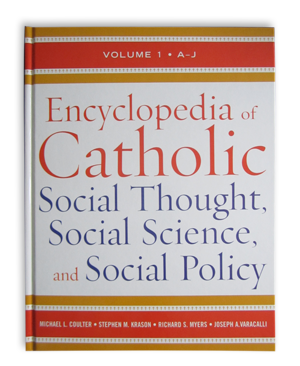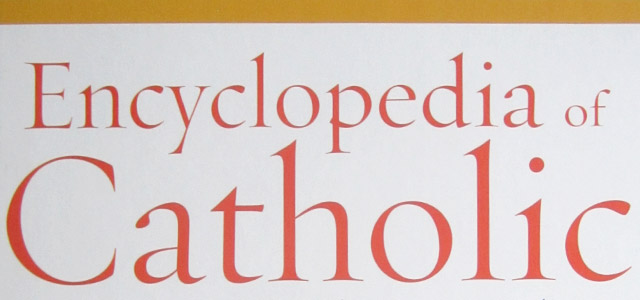Mary was asked to write the history of Mother Katharine Drexel for the Encyclopedia of Catholic Social Thought, Social Science, and Social Policy. Below is her contribution to the book.
DREXEL, MOTHER KATHARINE (1858-1955)
An heiress who gave her life and fortune to found the Sisters of the Blessed Sacrament, an order dedicated to serving Native Americans and African Americans, Katharine Drexel was driven by her love of God, the Eucharist, and the poor to establish schools and chapels across the United States, from reservations in the West to ghettos in New York City to backwater towns of Louisiana.
Katharine was born on November 26, 1858, the second daughter of wealthy Philadelphia banker, Francis A. Drexel, and Hannah Langstroth, who died five weeks after giving birth. In 1860 Katharine’s father married Emma Bouvier, who became the mother of his third daughter. Both Francis and Emma were devout Catholics, and one cannot overestimate the influence family had upon the Drexel girls. They lived in a home filled with love and formed by faith. In her later years, when asked about family prayer in her childhood, Katharine said, “Prayer was like breathing.”
 By age five, she had developed a deep love of the Eucharist, desiring her First Communion long before she was permitted to receive it. Not only did she experience devout prayer and sacramental life in the Drexel family; she also witnessed faith in action. Believing they were but steward of their wealth, Francis and Emma gave extravagantly of time and riches. Katharine and her sisters helped Emma distribute clothing, food, and rent money to the poor of Philadelphia who gathered at their door three days a week.
By age five, she had developed a deep love of the Eucharist, desiring her First Communion long before she was permitted to receive it. Not only did she experience devout prayer and sacramental life in the Drexel family; she also witnessed faith in action. Believing they were but steward of their wealth, Francis and Emma gave extravagantly of time and riches. Katharine and her sisters helped Emma distribute clothing, food, and rent money to the poor of Philadelphia who gathered at their door three days a week.
From an early age, Katharine wrestled with a call to religious life. In 1872 Father James O’Connor, pastor of the small parish near the Drexel’s summer home, became Katharine’s spiritual director, and was profoundly influential in her discernment of vocation. The desire to give her life completely to God intensified after she nursed her stepmother through a terminal battle with cancer. However, O’Connor advised her to pray and to wait, and while frustrated by his advice, she acquiesced. Though she moved gracefully in a world of wealth and privilege, Katharine was deeply moved by suffering of the poor, especially Native Americans.
After the death of her father in 1885, she and her sisters used their inheritance to respond to requests from Bishop Marty of Minnesota and Father Stephan, director of the Bureau of Catholic Indian Missions, corresponding with them even while on a tour through Europe. During this trip, Katharine had an audience with Pope Leo XIII and mentioned Bishop O’Connor’s need for missionary priests. The pope responded, “Why not, my child, yourself become a missionary?” Katharine was shaken by his words.
Still, O’Connor insisted Katharine’s true vocation was to set an example by remaining in the world and using her fortune to help Native American missions. Katharine did not agree, and finally, in 1888, she wrote O’Connor, declaring the truth of her call to religious life. He not only deferred to her conviction, but also insisted that she form a new order to carry out the work she had begun.
In 1889 the renunciation of her fortune and her entrance into the convent of the Sisters of Mercy in Pittsburgh stunned the nation. After her novitiate, she founded the Sisters of the Blessed Sacrament (“for the Indians and Colored Races” was added to its official name by the archbishop of Philadelphia, Patrick John Ryan, who had become her spiritual director after O’Connor’s death) which was permanently established in the Catholic Church in 1913.
The order’s rule reflected Katharine’s spirituality, combining passionate love of God and of the poor, with devotion to the Eucharist and a commitment to poverty. A third order Franciscan, Katharine personally lived evangelical poverty and counseled dependence of Divine Providence in all things, refusing to assure future financial security for her order by altering her father’s will or establishing a trust. The order lived a life of action rooted in the prayer of contemplatives.
Despite resistance from groups, including the Ku Klux Klan, Katharine and her order acted on their beliefs that good education would provide entrance into the mainstream of American life for those living on its fringes, and founded schools across the country. By 1935 the order was supporting thirty-four missions. As acute businesswoman with and adventurous spirit, Katharine visited every site, arriving by train, horseback, wagon, and even a rickety launch piloted through the Louisiana bayou by a French missionary. The most well-known of her foundations, Xavier University in New Orleans, trained teachers to with in other schools. Her order’s work extended beyond classroom walls as sisters visited homes and provided a broad range of social services to the oppressed.
While Katharine was not a political activist, she challenged racism in her day by refusing to be bound by its dictates. Her schools were fitted with the finest equipment available, and Xavier, with its integrated student body, was located in a white neighborhood. In later years, Katharine and her sister, Louise Morrell, supported the Catholic Interracial Council, which consolidated other groups, becoming the National Catholic Conference for Interracial Justice. Katharine also funded a National Association for the Advancement of Colored People (NAACP) investigation of racism in the South and helped establish a defense fund for the Scottsboro Boys. Mother Anna Dengel, founder of the Medical Mission Sisters, commented that Mother Katharine “saved the reputation of the United States as regards the racial question.”
Mother Katharine personally visited all her sisters’ missions, joining in their work, however menial. Her grueling schedule exhausted her, and she suffered a major heart attack in 1935. At her doctor’s insistence, she gave up traveling, and spent her last twenty years of life quietly at the motherhouse in Bensalem, Pennsylvania. For a while Katharine continued to be involved in the decisions of the order, but little by little she embraced the quiet life of a contemplative, the life she had desired in her youth. Mother Katharine Drexel died on March 3, 1955, and was canonized as a saint on October 1, 2000. She remains a model for a life of prayer and action in the modern world.—Mary Van Balen Holt
BIBLIOGRAPHY AND FURTHER READING: Duffy, sister Consuela, SBS. Katharine Drexel: A Biography. Bensalem, PA: Mother Katharine Drexel Guild, Sisters of the Blessed Sacrament, 1966; Holt, Mary van Balen. Meet Katharine Drexel: Heiress and God’s Servant of the Oppressed. Ann Arbor, MI: Servant Publications. 2002; See also NATIVE AMERICAN RELIGION; SAINTS AND SOCIAL ACTION
p 325-326

Speak Your Mind